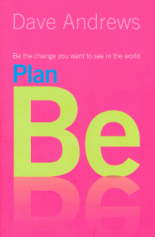Mayerly & The Children’s Peace Club
“During the past 20 years or so, Colombia has been synonymous with violence. For many of us, it has seemed a hopeless place dominated by drug traffickers, right-wing paramilitary groups and corrupt politicians. Add U.S. support with a lot of weaponry and you have the makings of a tragic mess. A biblical prophet spoke of a child leading the people, and in Colombia, children have been among the most courageous of visionaries. They aren’t just “the future”—they are the present. Mayerly Sánchez and her friends stunned me with their youthful hope.” Daniel Buttry
“Peace begins with yourself, with the way you treat your family, your friends, your communities, your country—but it does not stop there. Peace that begins in the hearts of children can cover the whole world.”
Mayerly Sánchez
In 1996, gang members in Soacha, a suburban slum of Bogotá, stabbed a 15-year old boy to death. The murder nearly went unnoticed in Colombia, a country with the highest murder rate in the Western Hemisphere where as many as 30,000 people are killed each year. But, one person noticed—the boy’s friend, 12-year-old Mayerly Sánchez. She turned her grief into a determination to work for peace.
Sánchez began with a children’s peace club. She was a sponsored child under World Vision International, a Christian relief and development agency, and was able to draw on World Vision support. Soon, she gathered a small group of children in a local park beginning with “conversation contests” in which players were disqualified for using insults. They organized soccer games, inviting gang members to join. They put on plays about peace, first for families, and later for entire communities. The club grew, and in 1996, Sánchez was invited to a national UNICEF workshop for child leaders to share peace-building ideas. At that meeting the Movimiento de los Niňos por La Paz (Children’s Movement for Peace) was launched.
The first project was massive: to achieve a nationwide vote by children between 7 and 18 years of age to express their hopes for the future of their nation. This children’s mandate was an idea carried out first in Mozambique and then in Ecuador. With help from UNICEF, World Vision, the Red Cross and other organizations, Sánchez and her young colleagues led a national campaign, speaking to children and organizing the vote through churches and schools. The children spoke eloquently about their experiences with violence. The child leaders received death threats, but as Sánchez said, “They can kill some of us, but they can’t kill us all.” Eventually both the government and guerilla forces pledged not to disrupt the national children’s vote. On October 25, 1996, 2.7 million children startled the world by expressing their right to peace and an end to violence in what became known as the Children’s Peace and Rights Mandate.
The following year, the Mandate was put to the general population, and 10 million Colombians voted in support of the vision lifted up by the children. Spurred by this groundswell, Colombians elected a president with a peace platform who began peace talks with Colombian guerillas. Although those talks have been on-again, off-again efforts, the peace movement has changed Colombian politics by mobilizing people who had been intimidated by the army, the paramilitaries, the guerillas and the drug gangs. Children forced peace to the top of the political agenda in this violence-plagued nation.
The Children’s Movement for Peace has grown to more than 100,000 children with 400 different organizations participating. Sánchez trains small groups of children to be leaders, then each of these children set up their own groups to train both families and communities in the skills of nonviolent action. One 15-year old child reported, “Mayerly taught us that peace needs to be practiced,” so it is in the interactions with friends, with neighborhood gangs, with kids at school and in the family that these skills must be honed.
For Sánchez, this is how a culture of peace is shaped. “In our families, which is where we begin, a culture of peace is beginning to be generated—then on the street where we live, then in the neighborhood, and from there it can spread nationally.” The Movement calls for peace zones around schools and is taking conflict-resolution programs into schools—realizing that children learn these principles best from other children.
The Children’s Movement for Peace is also aimed at pragmatic change in public policy. Colombia’s largest employers are armed forces. Children are often are recruited, sometimes forcibly, into the military, guerilla groups or drug militias. Advocacy by the Movement convinced the government to halt recruitment of boys under 18 for military duty.
In 1998 the Children’s Movement for Peace was nominated for the Nobel Peace Prize, the first time in history that children had received such an honor. They have received three subsequent nominations. Though they were not selected for the prize, the nomination brought important international exposure. Sanchez and other youth leaders were invited to a meeting at The Hague in the Netherlands to highlight the plight of the children in Colombia. These Colombian children have become role models for children around the world.
Since then, Sánchez has earned a college degree and continues to participate with the Children’s Movement for Peace, teaching and leading workshops. But, the group’s goal is to fill leadership positions with teens. At this time, Sánchez is employed by World Vision and the Colombian government on a project to educate children about the dangers of land mines. She supports her family, following the death of her father by a hit-and-run driver. She is one of the most important visionaries pursuing peace in Colombia, expressing what she envisions in words so simple that any child can understand: “We define peace in four words: love, acceptance, forgiveness, and work.”



